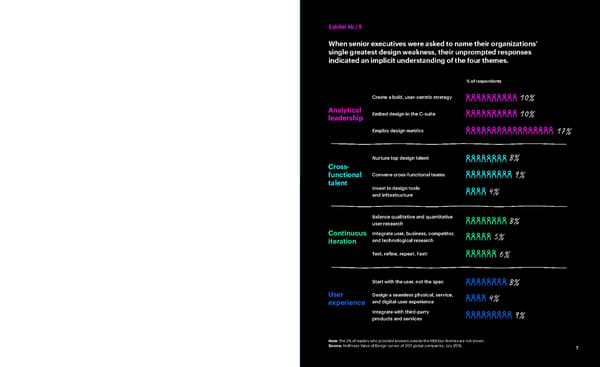Exhibit 4a / 5 Exhibit 4b / 5 When senior executives were asked to name their organizations’ single greatest design weakness, their unprompted responses indicated an implicit understanding of the four themes. % of respondents Analytical leadership Cross-functional talent Create a bold, user-centric strategy 10% Measure and drive design Make user-centric design Analytical Embed design in the C-suite 10% performance with the same rigor everyone’s responsibility, leadership as revenues and costs. not a siloed function. Employ design metrics 17% Nurture top design talent 8% Cross- functional Convene cross-functional teams 9% talent Invest in design tools 4% and infrastructure Balance qualitative and quantitative 8% user research Continuous Integrate user, business, competitor, 5% iteration and technological research T est, refine, repeat. Fast! 6% Continuous iteration User experience Start with the user, not the spec 8% De-risk development by Break down internal walls User Design a seamless physical, service, 4% continually listening, testing, between physical, digital, experience and digital-user experience and iterating with end-users. and service design. Integrate with third-party 9% products and services Note: The 2% of leaders who provided answers outside the MDI four themes are not shown. The Business Value of Design Source: McKinsey Value of Design survey of 300 global companies, July 2018. 7
 The Business Value of Design Page 14 Page 16
The Business Value of Design Page 14 Page 16